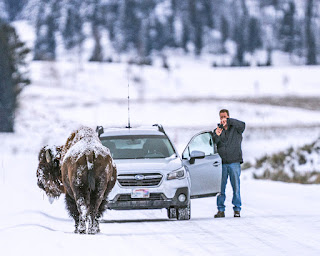Since the virus disruption my globetrotting adventures were
limited to forays to local areas. This
led to discovering the variety of birds at Biggins Park in Newport News,
Virginia. Spent about 4 months during spring and early summer of 2020 there and
was surprised by bald eagles visiting regularly to drink water (above) and the small
colony of Great Blue Herons (GBH’s) nesting there. Not to mention other regulars such as
mockingbirds, robins, cardinals, ospreys, etc.
Biggins Park is a community park for all to enjoy such as
families fishing/ picnicking or just doing sports in the open field. But what are about 20 cats doing here? If there would have been dogs instead, they
would have been taken away. Their stench
is noticeable particularly along the fishing pier, the area where they are
mostly fed. There is a couple that like clockwork, show every morning with a 5
gallon bucket of food pellets. I addressed this with the Newport News Park
and their response was that they have a spaying and neutering program and as
the cats die the issue will disappear. How long will this take and do they know
that all were sterilized? What about new fecund feral cats moving into the
park? It appears that there is not a
final solution. And the cat lovers; why don’t they adopt and give them a home? It will be kinder for the felines, and
environmentally enhance the safety of birdlife and the quality of life for the
park visitors.
After hatching a parent took a glance and said “what I have
here?--two little ones and raised its wings in celebration. From this point on there was a difference in
development speed and I named the dominant Bully and the smaller Lesser. Bully was aggressive and got fed first and
was always pecking at Lesser; the battle of the siblings.
Raising the chicks required numerous air deliveries and in
the beginning was by both parents initially regurgitating food into the beaks
of the hungry ones and usually Bully was first and Lesser just got the
leftovers. As they grew larger the food deliveries changed to whole fish and at
the nest, the adult will tear off pieces of morsels but later on the fish was
left in the nest and it was up to the chicks to feed themselves.
I suspected that Lesser was not going to survive and would been
thrown off the nest but it kept the fight and eventually survived leaving the
nest last. Second image below is Bully that was initially about half the size
of Lesser and was always calling to be fed when it saw the adult approaching
the nest.
Images below are for size comparison of the siblings. Note
in Bully the primary and secondary feather shafts developing and in the next image,
3 days later how the feathers shafts have shortened. Also notice that marginal feathers are barely
visible and in the first image are more developed in the second. These birds
grow so fast that a point I could not differentiate them from adults.
Images below are for size comparison of the siblings. Note
in Bully the primary and secondary feather shafts developing and in the next image,
3 days later how the feathers shafts have shortened. Also notice that marginal feathers are barely
visible and in the first image are more developed in the second. These birds
grow so fast that a point I could not differentiate them from adults.
By the beginning of June Bully have left the nest but Lesser
stayed and I thought that it was abandoned by the adults but I was wrong. They visited irregularly mostly in the afternoon
but brought no food for Lesser. By June 22 the nest was abandoned and I saw one
of the young fishing in the lake…most of the time it struck for a fish it
missed but eventually hit target.
Practice makes perfect.
Since the best time to photograph the nest was in the late
afternoon, I sat with the photo gear next to me under the death branches of a
tree and was always conscious of the danger. Fortunately the branches fell when
I was not there. Red markings show with an X my photo gear and I sat and the
circle the location of the nest. There
is no color consistency among the images but this is mostly due to the change
of lighting conditions during the day. This
is a small sampler of the 6476 images that I took during the time I monitored
the nest.
Concurrently I also spent time with the fox dens in Fort
Monroe but that is another story.











































































